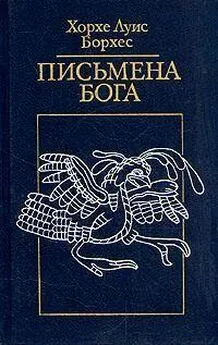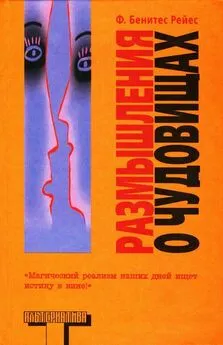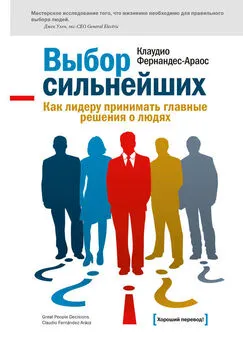Фелипе Фернандес-Арместо - Цивилизации
- Название:Цивилизации
- Автор:
- Жанр:
- Издательство:АСТ
- Год:2009
- Город:Москва
- ISBN:978-5-17-056644-0; 978-5-403-00426-8
- Рейтинг:
- Избранное:Добавить в избранное
-
Отзывы:
-
Ваша оценка:
Фелипе Фернандес-Арместо - Цивилизации краткое содержание
Фелипе Фернандес-Арместо — известный современный историк, преподаватель Университета Миннесоты, лауреат нескольких профессиональных премий и автор международных бестселлеров, среди которых особое место занимает фундаментальный труд «Цивилизации».
Что такое цивилизация?
Чем отличается «цивилизационный» подход к истории от «формационного»?
И почему общества, не пытавшиеся изменить окружающий мир, а, напротив, подстраивавшиеся под его требования исключены официальной наукой из списка высокоразвитых цивилизаций?
Кочевники африканских пустынь и островитяне Полинезии.
Эскимосы и иннуиты Заполярья, индейцы Северной Америки и австралийские аборигены.
Веками их считали в лучшем случае «благородными дикарями», а в худшем — полулюдьми, варварами, находящимися на самой низкой ступени развития.
Но так ли это в реальности?
Фелипе Фернандес-Арместо предлагает в своей потрясающей, вызвавшей множество споров и дискуссий книге совершенно новый и неожиданный взгляд на историю «низкоразвитых» обществ, стоящих, по его мнению, много выше обществ высокоразвитых.
Цивилизации - читать онлайн бесплатно полную версию (весь текст целиком)
Интервал:
Закладка:
561
Kennedy, loc. cit., p. 292.
562
Жаргон, составленный из элементов многих средиземно-морских языков, средство общения моряков и контрабандистов.
563
C. Renfrew, Archaeology and Language (London, 1987). Я вторю F. Fernandez-Armesto, The Times Illustrated History of Europe (London, 1995), pp. 13–14. Защита традиционной позиции J. P. Mallory, In Search of the Indo-Europeans (1989) слишком ясно демонстрирует отсутствие археологических доказательств существования индоевропейцев и их миграций. См. также Е. Leach, ‘Aryan Invasions over Four Millennia’ в книге E. Ohnuki-Tierney, ed., Culture Through Time: Anthropological Approaches (Stanford, 1990), pp. 227–245.
564
Rig Veda, 6.70.
565
Ibid., 1.32.
566
Vishnu-Mittre, ‘The Harappan Civilization and the Need for a New Approach’ в книге Posspehl, ed., op. cit., pp. 31–39, особ, p. 37.
567
Allchin and Allchin, op. cit., p. 308.
568
М. K. Dhavalikar, ‘Daimabad Bronzes’ в книге Posspehl, ed., op. cit., pp. 361–366. Я еще не имел возможности подтвердить предположение В. М. Pande, ibid., p. 398, что знаки письма Инда найдены в том же поселении.
569
В. P. Sinha, ‘Harappan Fallout(?) in the Mid-Gangetic Valley’ в книге Posspehl, ed., op. cit., pp. 135–139.
570
S. Kemper, The Presence of the Past: Chronicles, Politics and Culture in Sinhala Life (Ithaca, 1991), pp. 2–3, 8, 32, 43, 54–59.
571
J. Brow, Demona and Development: the Struggle for Community in a Sri Lankan Village (Tucson, 1996), pp. 33–34.
572
J. Still, The Jungle Tide (Edinburgh, 1930), p. 75; процитировано в A. J. Toynbee, A Study of History, vol. ii (London, 1934), p. 5.
573
Michael C. Rogers’s translation in P. H. Lee, ed., Sourcebook of Korean Civilization, vol. i (New York, 1993), p. 14.
574
H. Maspero, China in Antiquity (n.p., 1978), pp. 14–15.
575
Ibid., p. 17.
576
D. N. Keightley, ed., The Origins of Chinese Civilization (Berkeley, 1983), p. 27.
577
К. C. Chang, Shang Civilization (New Haven and London, 1980), pp. 138–141; A. Waley, The Book of Songs Translated from the Chinese (London, 1937), p. 309.
578
Ibid., p. 24.
579
Ibid., 242.
580
Chang, op. cit., p. 70.
581
Te-Tzu Chang, The Origins and Early Culture of the Cereal Grains and Food Legumes’ в книге Keightley, op. cit., pp. 66–68.
582
W. Fogg, ‘Swidden Cultivation of Foxtail Millet by Taiwan Aborigines: a Cultural Analogue of the Domestication of Serica italica in China’, ibid., pp. 95-115.
583
Waley, op. cit., pp. 164–167.
584
Te-Tzu Chang, loe. cit., p. 81.
585
Chang, Shang Civilization, pp. 148–149.
586
Maspero, op. cit., p. 382.
587
Lu Sung Mao 300 in Shih-chung, процитировано в М. H. Fried, Tribe to State or State to Tribe in Ancient China?’ в книге Keightley, op. cit., pp. 467–493, особ. pp. 488–489.
588
Chang, op. cit., p. 12.
589
R. Pearson, The Ch’inglien-kang Culture and the Chinese Neolithic’, в книге Keightley, op. cit., pp. 119–145.
590
Needham et al., op. cit., vi, part II (by F. Bray) (Cambridge, 1984), p. 491.
591
Ho Pingti, The Cradle of the East (Hong Kong, 1975), p. 362.
592
D. S. Nivison, ‘A Neo-Confucian Visionary: Ouyang Hsiu’ в книге D. S. Nivison and A. F. Wright, eds, Confucianism in Action (1959), pp. 97-132; F. Fernandez-Armesto, Millennium: A History of Our Last Thousand Years (New York, 1995), p. 56.
593
Это, однако, был более медленный и поздний процесс, чем обычно считается; см. S. Т. Leong, Migration and Ethnicity in Chinese History: Hakka, Pahgmin and their Neighbours, (Stanford, 1997) и R. Bin Wong, The Social and Political Construction of Identities in the Qing Empire’, Itinerario (forthcoming), xxv (2001).
594
К. C. Chang, ‘The Late Shang State’ в книге Keightley, op. cit., p. 573.
595
К. C. Chang, Art tMyth and Ritual: the Path to Political Authority in Ancient China (Cambridge, Mass., 1983), p. 10.
596
Мера длины.
597
Shih в книге В. Karlgren, The Book of Odes (Stockholm, 1974), p. 189; приведено в К. С. Chang, Art, op. cit., p. 18; другая версия в Waley, op. cit., p. 248.
598
Chang, Shang Civilization, op. cit., p. 161.
599
Waley, op. cit., pp. 113–136.
600
К. C. Chang, в книге Keightley, op. cit., pp. 495–464.
601
Chang, Shang Civilization, op. cit., pp. 185–186.
602
Ibid., p. 12.
603
Li Chi, The Beginnings of Chinese Civilization (Seattle, 1957), p. 23; отрывок в ibid., p. 142.
604
Chang, Art, op. cit., p. 45.
605
F. Fernandez-Armesto, Truth: a History (London, 1998), pp. 47–64.
606
Chang, Art, op. cit., p. 34.
607
Ibid., p. 42.
608
Ibid., pp. 37–38.
609
Chang, Shang Civilization, op. cit., p. 195.
610
S. N. Eisenstadt, ed., The Origins and Diversity of Axial Age Civilizations (Albany, 1986).
611
F. Fernandez-Armesto, Millennium: A History of Our Last Thousand Years (New York, 1995), pp. 49–50, 258–262.
612
V. Purcell, The Overseas Chinese in South-east Asia (Oxford, 1980); Yuan-li and Chun-his Wu, Economic Development in south-east Asia: the Chinese Dimension (Stanford, 1980); L. Pan, Sons of the Yellow Emperor (Tokyo, 1990); R. Skeldun, ed., Reluctant Exiles? Migration from Hong Kong and the New Orleans Chinese (London, 1994); S. Seagrave, Lords of the Rim (London, 1995).
613
C. P. Fitzgerald, China: a Short Cultural History (London, 1950), pp. 339–340.
614
Odes, III, xxix, 27.
615
Samuel Johnson, A Journey to the Western Isles of Scotland (ed. M. Lascelles (Yale University Press, 1971), p. 43).
616
Joel Martinez Hernandez, ‘Quesqui Nahuamacehualme Tiztoqueh?’ (отрывок в M. Leon-Portilla, The Broken Spears (Boston, 1992), p. 107).
617
Bernabe Cobo, Historia del Nuevo Mundo (1653), book I.
618
A. Pagden, ed., Нетап Cortes, Letters from Mexico (New York, 1971), p. 55.
619
Ibid., pp. 77–78.
620
B. Diaz de Castillo, Historia verdadera de la conquista de la Nueva Espaha, ed. J. Ramirez Cabanas, 2 vols (Mexico, 1968), vol. i, p. 260.
621
См. H. R. Trevor-Roper, The European Witch-Craze of the Sixteenth and Seventeenth Centuries (Harmondsworth, 1978).
622
J. Vieillard, Le Livre du pelerin (Macon, 1950), pp. 26, 28.
623
E. Le Roy Ladurie, The Beggar and the Professor: a Sixteenth-century Family Saga (Chicago, 1997), pp. 10, 16–30.
624
BoswelVs Journal of a Tour to the Highlands, ed. F. A. Pottle and С. H. Bennett (New York, 1936), p. 210; The Works of Samuel Johnson, 9 vols (London, 1825), vol. ix, pp. 24, 97.
625
D. Lang, Armenia: Cradle of Civilization (London, 1980), pp. 30–31.
626
С. I. Beckwith, The Tibetan Empire in Central Asia: a history of the Struggle for Great Power among Tibetans, Turks, Arabs and Chinese during the Early Middle Ages (Princeton, 1987), p. 129.
627
G. Yazdani, ed., The Early History of the Deccan, vol. i (London, 1960), p. 13.
628
К. C. Day, ‘Storage and Labor Service: a Production and Management Design for the Andean Area’, в книге М. E. Moseley and К. C. Day, eds, Chan Chan: Andean Desert City (Albuquerque, 1982), pp. 338–349.
629
C. Morris and A. von Hagen, The Inka Empire and its Andean Origins (New York, 1993), p. 54.
630
Т. С. Patterson, The Huaca La Florida, Rimac Valley, Peru’, в книге С. В. Donnan, ed., Early Ceremonial Architecture of the Andes (Washington, DC, 1985), pp. 59–70.
631
T. Pozorski, The Early Horizon Site of Huaca de los Reyes: Societal Implications’, American Antiquity, xlv (1980), pp. 100–161.
632
R. L. Burger, ‘Unity and Heterogeneity within the Chavin Horizon’, в книге R. W. Keatinge, ed., Peruvian Prehistory: an Overview of Pre-Inca and Inca Society (Cambridge, 1988), pp. 99-144.
633
Ibid., p. 161.
634
A. Kolata, The Agricultural Foundations of the Tiwanaku State: a View from the Heartland’, American Antiquity, li, pp. 748–762; The Technology and Organization of Agricultural Production in the Tiwanaku State’, Latin American Antiquity, ii (1991), pp. 99-125; cm. D. E. Arnold, Ecology and Ceramic Production in an Andean Community (Cambridge, 1993), p. 31.
635
K. Berrin, ed., Feathered Serpents and Flowering Trees: Reconstructing the Murals of Teotihuacan (San Francisco, 1988), pp. 141–228.
636
R. E. Blanton, Monte Albdn: Settlement Patterns at the Ancient Zapotec Capital (New York, 1978).
637
J. Marcus and К. V. Flannery, Zapotec Civilization (London, 1966), p. 197.
638
J. W. Whitecotton, Zapotec Ethnology: Pictorial Genealogies in Eastern Oaxaca (Nashville, 1990).
639
R. Spores, ‘Tututepec: a Post-classic Mixtec Conquest State’, Ancient Mesoamerica, iv(1993), pp. 167–174.
640
R. A. Diehl, Tula: the Toltec Capital of Ancient Mexico (London, 1983), pp. 41, 162.
Читать дальшеИнтервал:
Закладка:








